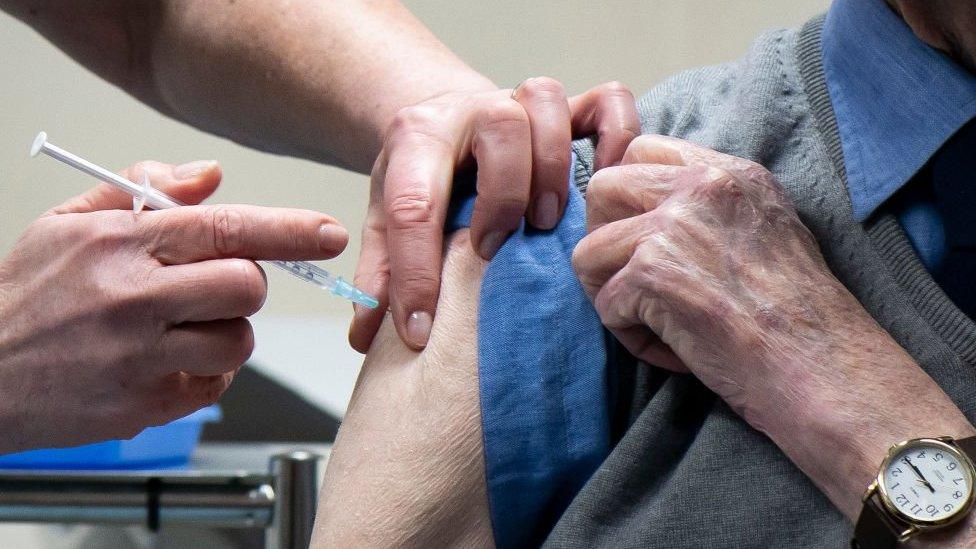Covid vaccine: Can Wales meet its targets?
- Published
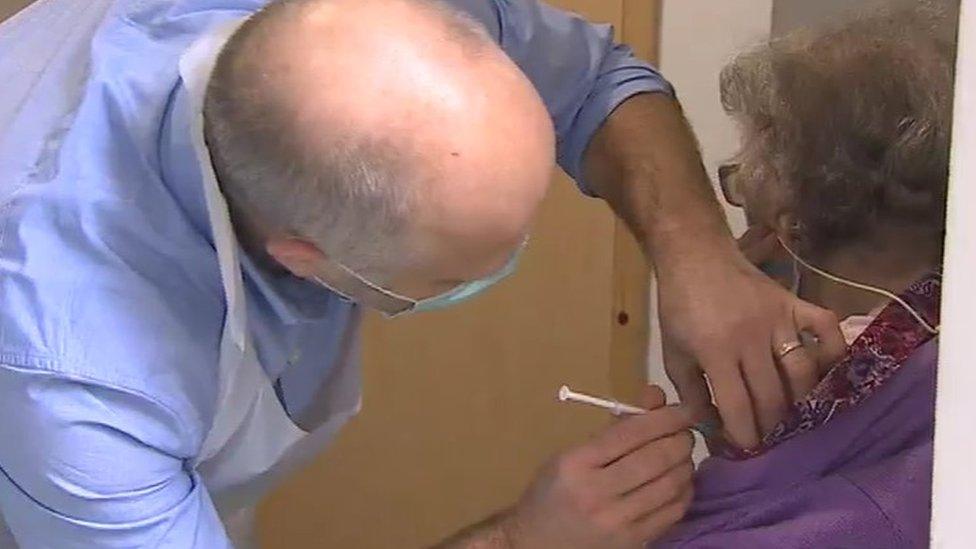
It is hoped 70% of the over-80s in Wales will get the first dose of a Covid vaccine by the end of the weekend.
But it could be a few days before the official figures are published so we know for sure.
First Minister Mark Drakeford said, because he has access to "day-by-day" data, it gives him confidence to know that by the end of Sunday, the target should be met
But with criticism of a slow start to its vaccination roll-out, has Wales been lagging behind other nations?
What can we tell from the latest data?
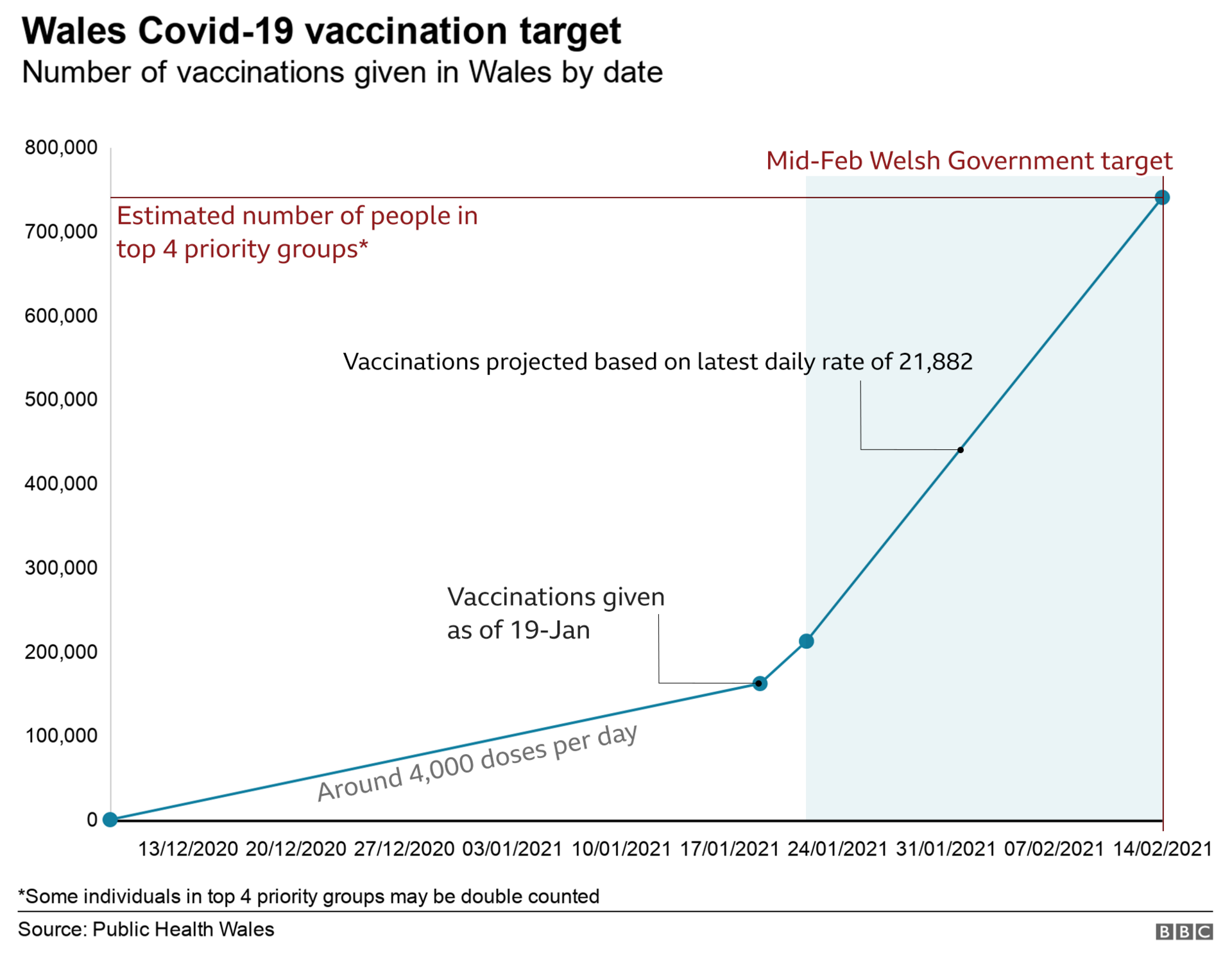
This chart shows a projection to hit the target, based on Friday's published figures

Wales reported 28,230 first dose vaccinations on Saturday - a 29% rise in its daily total on the day before.
If this was maintained at the same level, it is well on course to see the target of first doses of the first four priority groups being met by 14 February.
With 7.6% of the population getting the first dose, this is now even a little ahead of Scotland (7%), based on rates of population.
England has reached 9% of its population. But comparisons are complicated and here's why.


There's a lag in the figures we see compared to what's going on
The vaccine figures we see every day are already a few days old. It takes up to five days after a person receives a dose for the data to be actually published.
GPs are asked to input data as soon as possible but it then has to be checked and verified by the national immunisation service and Public Health Wales - to ensure people aren't double-counted for instance - before it is actually published.
So there is a built-in lag between what NHS Wales bosses are seeing happening daily and when we see the figures.
One health official said they were under-reporting rather than leaving "any chance of over-reporting".
That enables Mr Drakeford, from the information he has to hand each day, to have confidence.
"Ministers every day see information, operational data that comes in from the health service, more or less, in real time," he said.
"The statistics that are published every day have a lag in them. They have to be collected formally from the health service.
"They have to be interrogated, they have to be quality assured, and then they are published as formal figures."
How does this compare to England?
In England, "real time" data is published the next day, which is then subject to changes if necessary at a later date.
So, the official figures from NHS England - showing a higher rate - are actually ahead in time compared to Wales.
It pointed to its website which states that data was "provisional", showing doses, as reported by midnight on the date before publication.
"The weekly release then provides more accurate and detailed data by dose and age," it added.
Wales had 6% of people given a first dose by 21 January, England had reached 6% four days earlier - but without the publishing lag.
The figure for Saturday was 9% of population in England and 7.6% in Wales. Four days earlier, the figure in England was 6.5%.
Different approaches to start with - things will even out
Wales admittedly seemed to make a slow start last month, compared to other UK nations.
One of the explanations from health bosses in Wales is that it was a product of the different approaches taken by the UK nations to start with.
They expect things to even out between now and February.
Northern Ireland focused on mobile vaccination units to care homes, England focused on its primary care hubs, doing about two-thirds of vaccinations, while Wales started with mass vaccination centres before bringing in its network of GPs - increasing as more of the Oxford-AstraZeneca vaccine became available.
Some GPs were frustrated they did not get supplies early on. This was because vaccine batches could not be split up and had to be sent in their original sized packs, but as supplies increased this issue was expected to be ironed out.
Health officials in Wales said GPs were condensing a lot of their vaccine clinics from Wednesday onwards and then into the weekends.
Vaccination figures are not normally published at weekends in Wales in any case. But with the data lag, we should see the proof in the pudding later in the week.
Where are people being vaccinated?

Gorseinon mass vaccination centre is one of three in the Swansea Bay health board area to open so far - it will focus on vaccinating people in their late 70s, in tandem with GP practices
A total of 650,000 in the four first priority groups are expected to get first doses of vaccines by mid-February.
Mass vaccination centres (MVCs) - about 40% will be delivered through this network of approximately 35 centres, with the Pfizer vaccine. These includes healthcare and care home workers, and in the weeks to come the over-70s and second doses. If there is more supply of Oxford-AstraZeneca vaccine, some MVCs could be adapted to take this too.
GP practices - about 48% of vaccines are expected for the first priority groups from 250 GP centres, involving Oxford-AstraZeneca vaccines to the over-80s initially.
Mobile units will deliver about 5% to isolated people and those in care homes and 7% by a hybrid model with vaccine centres that might open for short time.
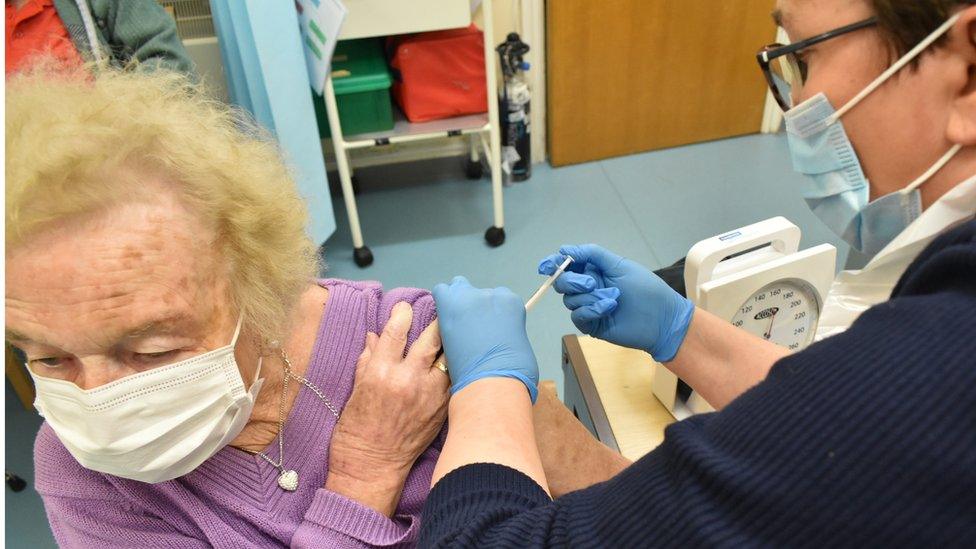
All 60 GP practices in Cardiff and Vale health board will be part of the roll-out
The planning of the programme and how many vaccines will be delivered from these different areas of the health service will depend on supply, but health officials are planning for centres opening later - including possibly 24 hours in future.
They are looking to train opticians and dentists to help, as well as the likes of St John Ambulance and 50 firefighters.
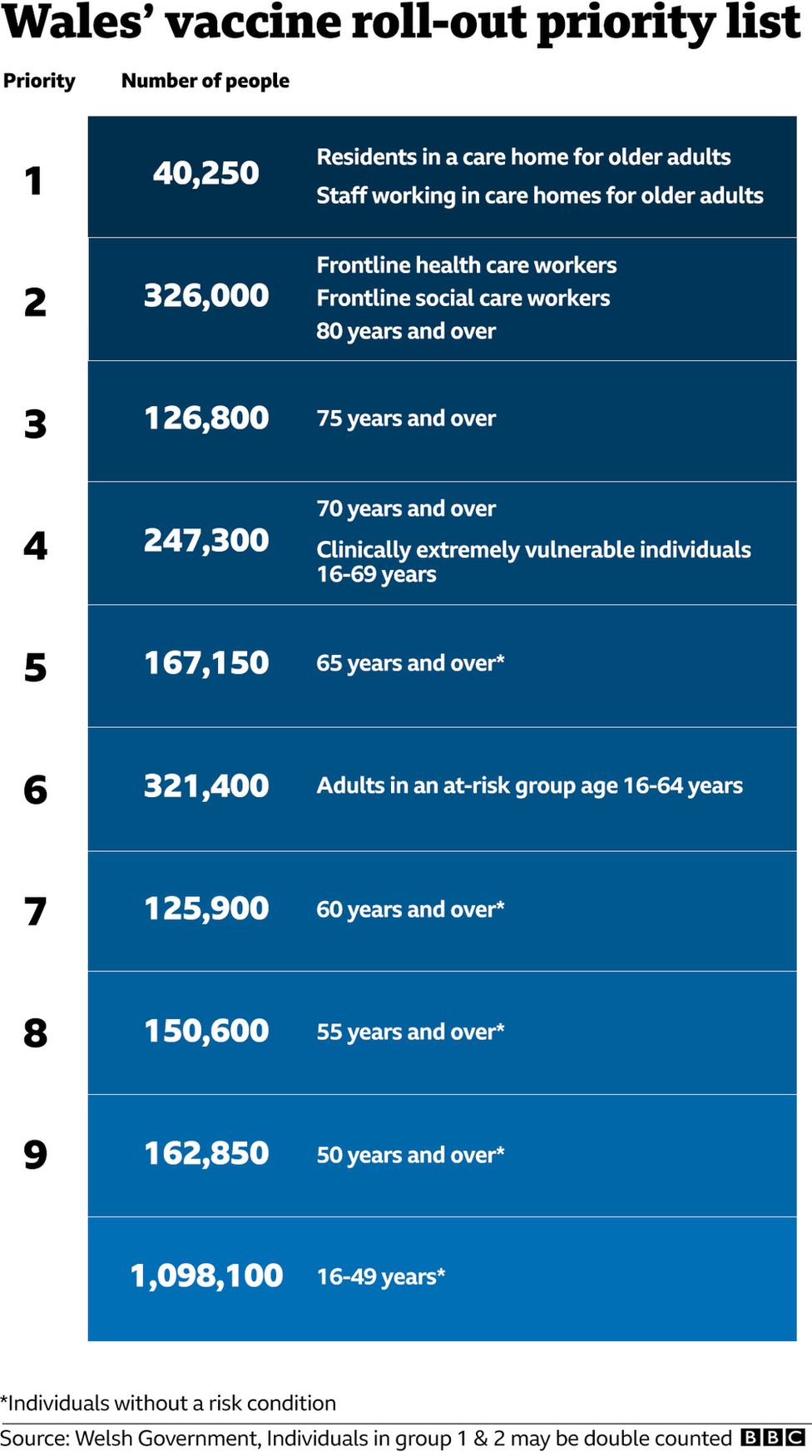

NHS Wales is using what has been called its own "seamless" booking and tracking system for the immunisation programme.
Updated four times a day, it manages supply and can see who is scheduled to be vaccinated and where.
It means appointments can be sent quickly, which can be used by GPs, to see who on their list may have been seen and to hopefully avoid double bookings.
So will we see an uplift this weekend?
Health officials certainly hope so. They say since the start of the roll-out, 180,000 doses of Pfizer-BioNTech and 140,000 Oxford-AstraZeneca doses - 320,000 in all - have gone out to health boards, will "go into arms" and will start to show up in figures.
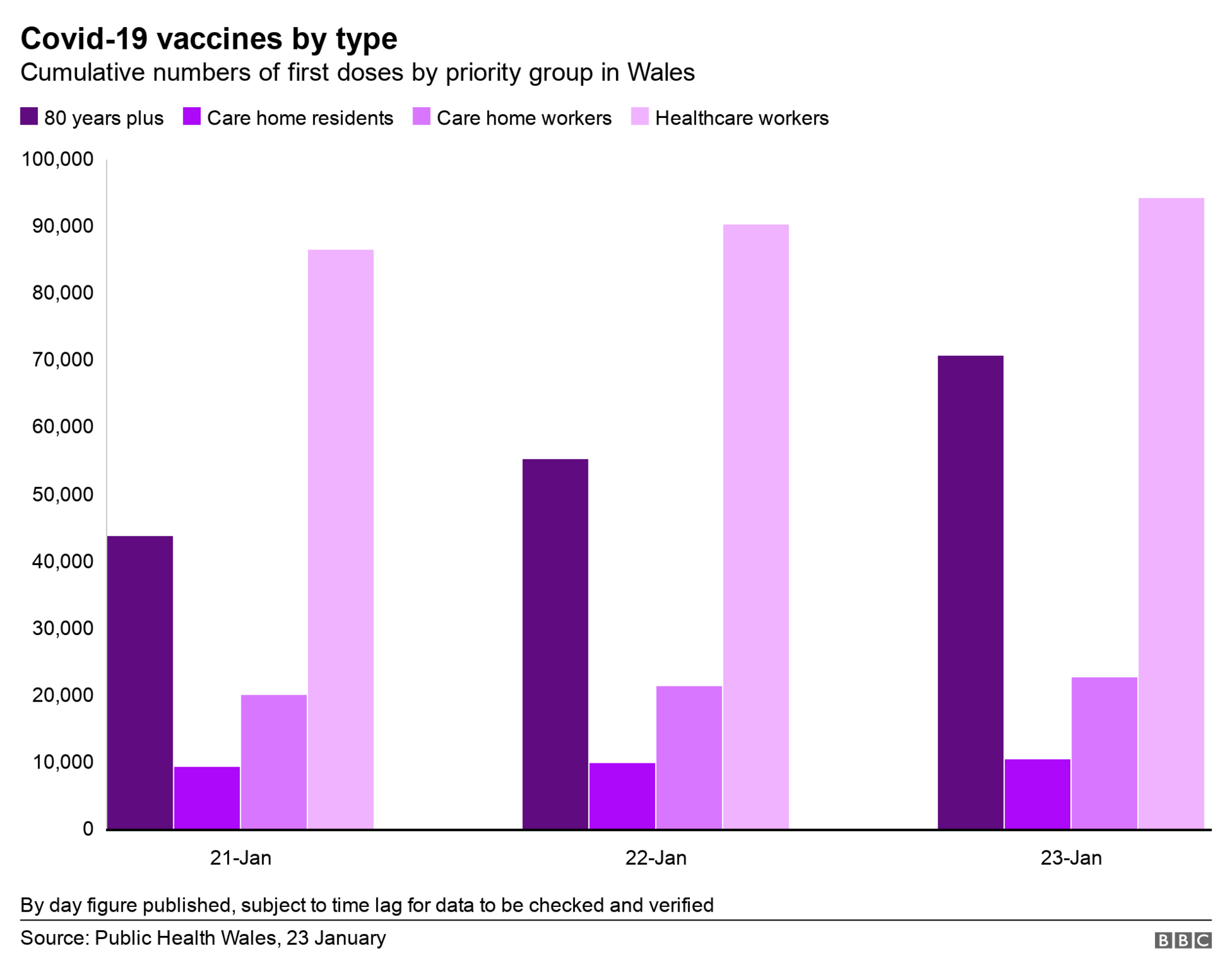

The gap between supplies going out and actual vaccinations is getting smaller all the time, indicating a step-up.
Friday's figures showed 30% of over-80s and 60% of care home residents had received a first dose; on Saturday it had risen to 38.7% and 63.2%. These would be lagged figures.
However, the changes in daily numbers for the over-80s - increases of 11,500 and 15,451 in successive days - suggest we are starting to see the results of the roll-out in GP clinics.
The hope is that 70% of over-80s and care home residents will have had the vaccine (or been offered it, they might refuse) by the weekend. The target is that all will be reached by the end of January.
If at the current rate - and if it stayed the same - that 70% target for the over-80s would be reached in about six days. But the trend is expected to be upward.
Those in charge of the programme say they can see a steep rise in the numbers of over-80s and care home staff getting their dose, while the health minister said he expected the programme to "significantly ramp up".
Related topics
- Published29 March 2021

- Published22 January 2021
- Published10 February 2021
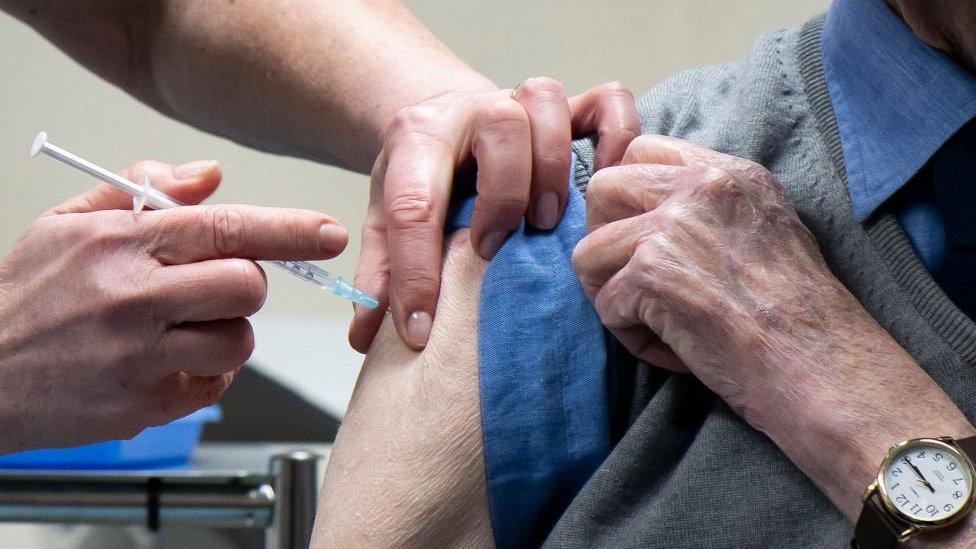
- Published21 January 2021
